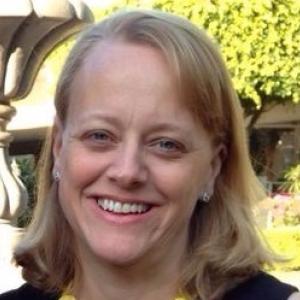In partnership with our parent organization, the International Center for Journalists (ICFJ), IJNet is connecting journalists with health experts and newsroom leaders through a webinar series on COVID-19. The series is part of the ICFJ Global Health Crisis Reporting Forum.
This article is part of our online coverage of reporting on COVID-19. To see more resources, click here.
“You have a television station. We have these AK-47s. We will have to tell our stories with these guns,” members of an indigenous community who had joined Maoist forces told journalist Shubhranshu Choudhary. “Your media will not give us any space.”
“Their representation is zero,” and India’s mainstream media shows little interest in changing that, Choudhary said during a panel discussion co-hosted Tuesday by ICFJ and the Media Diversity Institute (MDI).
Around the world, a lack of media diversity has dire consequences. Yet even among news outlets that claim to value diversity, most have failed in their efforts to hire, retain, engage and report accurately on minority and disenfranchised communities, panelists said.
At the same time, the global pandemic’s outsized effect on already-vulnerable communities, along with the growing strength of the Black Lives Matter movement in both the U.S. and other countries, is forcing a reckoning in many newsrooms, they said. Choudhary, founder of India’s CGNet Swara and a former ICFJ Knight Fellow, joined Tory Parrish, regional director of the National Association of Black Journalists (NABJ) in the U.S; Frans Jennekens, head of diversity at Dutch broadcaster NTR; and Syrian journalist Zaina Erhaim, communications manager at the Institute for War & Peace Reporting (IWPR), to examine the state of media diversity. MDI Communications Manager Anna Lekas Miller moderated the discussion.
“It's really hard to cover a community when you only swoop in when bad things happen,” said Parrish, a business reporter at Newsday. “And that has been a problem with the media for centuries.”
In the U.S. this year, “black journalists have become more outspoken in the newsroom for the last couple of months,” she said. In her own newsroom, “there are conversations going on about coverage, about diversity, about hiring” and the importance of diversity at the management level, she said.
[Read more: Tips for ethical trans representation in your reporting]
She said hiring managers need to be more intentional in their efforts to hire and retain diverse talent. “The quality of the talent is there. But the issue is how deliberate are you in bringing the talent onto your staff? And it's not enough to just say, ‘Well, we posted the job.’ Did you reach out to any journalists of color? Did you reach out to the National Association of Black Journalists, National Association of Hispanic Journalists, Asian American Journalists Association offices?” She emphasized the importance of hiring more than just one or two people from each underrepresented group, which leads to isolation and high turnover, she said.
Jennekens, with NTR, said he believes “the newsroom is mostly a representation of the ruling powers. And the whole problem is, in my view, that in the newsroom there is this system of tapping. So when people are hired for the newsroom, they want to have someone who looks like the people who are already in the newsroom. And as long as this whole system of tapping is not more or less destroyed, I think it will be very difficult to change a newsroom.”
He thinks the journalism industry “should see this as a business case, as something that makes this medium stronger. You get more viewers, you get more participants. Your base and society will be stronger if you are more diverse and you give more room to different kinds of voices and to people who are not the same as yourself.”
[Read more: Key Quotes: COVID-19 and reporting on communities of color]
Erhaim, the Syrian journalist who works for IWPR, noted that in some cultures, newsroom diversity is a non-starter.
“When we're speaking about the Middle East or the Arab world, diversity is in many cases criminalized,” she said.
“Getting to know who you're living with, getting to know the other cultures, sects and ethnicities is going to make a kind of peace,” Ehraim said. “You might be able to unite together, but everyone was raised on fearing the others and that was their way of controlling the area and keeping everyone silent.”
Erhaim also advocated for free legal counsel for journalists who want to sue the large media companies that parachute in and take unfair advantage of local reporters.
“We don't know our rights. We are not raised to know about rights or demand them,” she said. If enough journalists begin to take legal action, “big media institutions will think twice before taking advantage of local journalists or treating them as free-of-charge sources.”
Choudary urged others to start their own, independent platforms for news. As an ICFJ Knight Fellow, he created CGNet Swara, a citizen journalism platform that uses Bluetooth technology to bring news to media-dark villages in India.
“We should be more interactive. A lot of journalists are afraid of their own audience,” he said.
“Can people tell their own stories? Can [citizen reporting] be a new way of doing journalism? Can we reinvent ourselves?” he asked. “Technology is giving us that opportunity. In the remotest parts of the country, I go to any village in India, and I find at least half a dozen mobile phones.” Each phone can broadcast and become its own radio station, he said.
“Can we connect that radio station which is there in every pocket with our newsrooms? It is doable. It is possible. We should be doing more of it. We should be using more of this technology if we want to remain relevant,” he said.
Jennifer Dorroh is a senior program director at ICFJ.
Main image CC-licensed by Unsplash via Christina @ wocintechchat.com.


